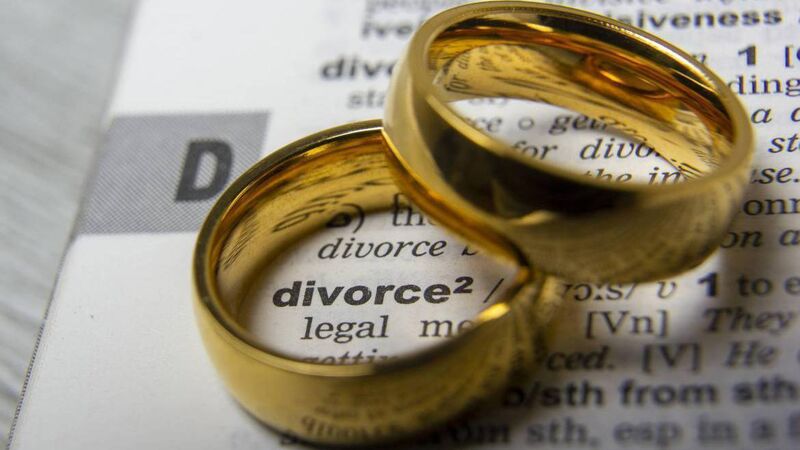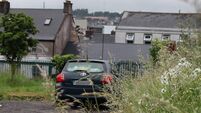30 years on: Day Ireland lifted ban on divorce

The Irish people voted narrowly in favour of allowing divorce in 1995 - 50.28% said Yes to the change
In December, 2017, the New York Times published a lengthy feature under the heading ‘How Ireland Moved to the Left’. At first glance, readers may have thought that James Connolly’s dream of a socialist republic had at last been realised, and that soon the Red Flag would be fluttering over Leinster House.
But the sub-heading told the real story: ‘The Demise of the Church’ - and the article went on to list the far-reaching changes that had occurred in the socio-sexual sphere - changes that showed Ireland was no longer a bastion of Catholic conservatism.
Among those changes was the scrapping of a section of Article 41 of the Constitution following a referendum 30 years ago today, on November 24, 1995 - the section which read “No law shall be enacted providing for the grant of a dissolution of marriage”. Divorce was now legal in the Republic for the first time.
But back in 1986, Ireland was a very different place, and the lifting of the ban on the dissolution of marriage seemed like something out of science fiction.
It all started with what came to be known as Dr Garret Fitzgerald’s “constitutional crusade”, though he himself had called it a “republican crusade”.
In an RTÉ radio interview with Gerry Barry in September, 1981, the then Taoiseach said “What I want to do is to lead a crusade - a republican crusade to make this a genuine Republic on the principles of Tone and Davis.”
Having said earlier that he believed passionately in a united Ireland, Dr Fitzgerald added: “Our laws, constitution and our practices are not acceptable to the Protestants of Northern Ireland”.
Thus began a campaign for the liberalisation of the Republic’s laws - with Article 41 of Bunreacht na hÉireann as the first target. But it was never a well-organised or coherent campaign. And there was always going to be a backlash.
Eventually, a divorce referendum was announced for June, 1986. The conservative lobby, with Family Solidarity now at the forefront, had learned lessons from the controversies over contraception, following the McGee case in 1973, and the Pro-Life campaign of 1983.
And the Catholic bishops had gone on the offensive in March, 1985, with a pastoral letter Love is for Life, read at all Masses on three consecutive Sundays. This was followed up by an updated version entitled Marriage, the Family and Divorce, published just before the referendum.
Yet opinion polls were very favourable to the Yes side. One, carried out just weeks before the referendum, showed that 57% were in favour of deleting the constitutional ban on divorce, with 36% against and 7% with no opinion.
By the day of the vote - June 26, 1986 - so effective was the anti-divorce campaign that the findings of that April poll were reversed. The No side won with a massive majority (63.5%).
The street posters had been devastating in their emotional impact. ‘A divorced woman is like a second-hand car - someone else’e headache’. ‘Does divorce work? Ask Elizabeth Taylor’.
The anti-divorce campaign cleverly presented women as victims rather than as free agents. The colourful phrase used by Fine Gael TD Alice Glenn captured the tone: “Any women voting for divorce is like a turkey voting for Christmas.” The defeat was decisive. Senator Catherine McGuinness, a member of the Church of Ireland, felt the campaign had been “a litmus test about the type of society we want - we have shown we want a Catholic State and we should have the honesty to admit we aren’t interested in a united Ireland”.
Dr Fitzgerald’s crusade against the sectarian features of the Irish Constitution and legislation had suffered a serious setback. But the social problem of marital breakdown remained. Fitzgerald himself considered that the property argument was the fact that led to defeat.
An editorial in the Irish Times the day after the vote said: “There is a social momentum in the matter of divorce - beyond denomination and dogma - that cannot be halted. It will come in this State as it has come elsewhere; and it may not be so long in coming”.
Prophetic words - but it would take another nine years before citizens would have a chance in a second referendum to vote on the right to remarry.
That second referendum, on November 24, 1995, was narrowly passed with 50.28% of voters approving the introduction of divorce (49.72% voted No). The outcome allowed for divorce under strict conditions.
The razor-thin result brought an end to a sometimes fraught campaign. Research in the area of family law had shown that the number of separated people had grown alarmingly - a 48% increase in five years.
“To continue to deny a right to a second chance would represent a grave injustice to many thousands of individuals,” Tánaiste and Labour Party leader Dick Spring said.
“This particular clock will never be turned back,” declared his Labour colleague Barry Desmond.
“By 1995, the ideal notion of the family could not be sustained in the light of the social reality of changed perceptions of marriage,” said historian Diarmaid Ferriter.







 App?
App?







